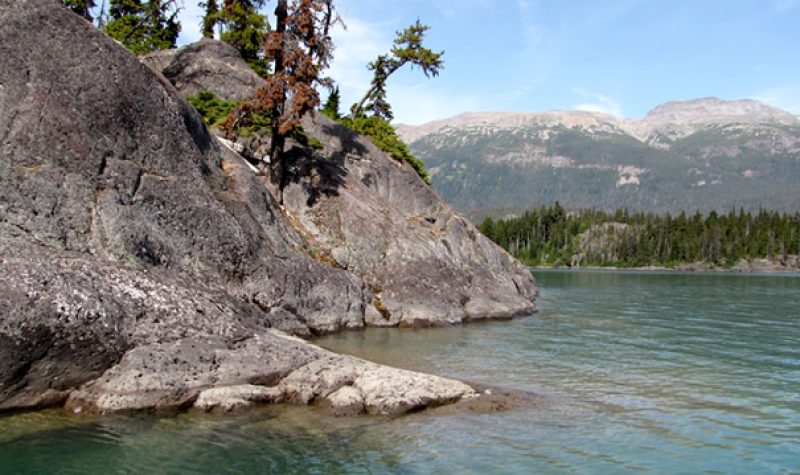At the Wet'suwet'en Fisheries camp at Morice Lake, biologists Michael Price and Bryant Michelle, along Tieasha Pierre, Natural Resource Dept at the Office of the Wet'suwet'en sit in a boat measuring results from passive traps they've laid in the calm lake waters of the Morice.
They are working together running a smolt trapping program to better understand Morice Lake sockeye salmon productivity in the lake, ultimately part of a larger effort to rebuild sockeye salmon numbers in Wet'suwet'en territory. This project's focus is especially aimed at Morice Lake sockeye, which numbers have been dwindling.
Salmon productivity is vital to the Wet'suwet'en way of life, as salmon is a critical food source for them, as well as a signifier of the health of the waters on Wet'suwet'en territory.
The biologists and fisheries experts are trapping smolts to determine how long they live in the lake, to show how productive the juvenile salmon are before they exit the inlet and enter the Morice River (the Wetzinkwah).
Michale Price explains that they use "a "live box", which is a part of the trap where the fish congregate to relax in calmer waters before they enter the river", and that's where Price and his team of biologists test them (for weight and length) to measure their health and size as well as extract scales to determine how old the fish are.
This is important to determine how productive the waters in the Morice are for the salmon, and what proportion of the salmon are returning, to understand the mortality rate of these beautiful fish.
"One of the most important aspects of this project [...] is that these measurements indicate that these fish are growing more than they did in the past, which might translate to a higher survival rate."
This is good news for the Wet'suwet'en, and anyone who lives near the Wetzinkwah.
Listen to Dan's conversation with biologist Michael Price in the link below.


